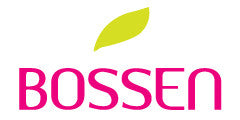How to Write a Business Plan for Your Bubble Tea Shop
As with any other business endeavor, starting a bubble tea shop is not easy. With so many floating factors, aspiring shop owners can become lost before the process even begins. Writing a business plan can seem time-consuming and unnecessary, but the results may help paint a better picture of your store’s potential while dodging possible risks and pitfalls. Having a business plan can ensure a better understanding of your goals from prospective banks, sponsors, manufacturers and the marketplace and also serve as a strategic roadmap for your business.

Things to Keep in Mind Before Starting
Now that you understand the importance of a business plan, you should do your research on bubble tea and look over other business plan templates to jumpstart your own ideas. A good place to start is here. Another great resource is Small Business Administration, which provides counseling on creating a successful business plan. Make sure you set a casual but professional tone in your writing, so readers easily understand your message. Once you have a general grasp on what your business plan is, you can follow these next steps!
Executive Summary
First impressions matter, especially when it involves your business plan. This section should summarize your entire idea in an exciting way that makes the reader want to learn more. A strong executive summary includes a clear mission statement, your store concept and planned execution, and an overview of potential expenses and returns. Even though this is the first page to your business plan, it is best to save this for last after you have a better understanding of your brand.
Company Overview
This is the “who, what, when, where, why” of your business plan. The company overview presents general information such as location, business times and concepts. It also explains your tea shop brand and its unique appeal, store theme, service style, and customer experience.
-
Sample Menu - What are you selling and how much? Outline potential costs for menu engineering and designs, and how you’ll test your menu to improve profits.
- Management Team - Include job descriptions and requirements for each employee position (CEO, bobarista manager, financial advisor, etc). If you already hired an experienced team, detail their qualifications and show off their credentials.
Industry Analysis
This is where your research comes in handy. The industry analysis explains the current industry landscape, overall trends and general market for bubble tea, while tying it back to the market interests near your shop’s location. For the latest tea industry trends and insight, refer to World Tea News.
-
Target Market - Find your store’s niche. Is bubble tea wildly popular among a certain group? Be sure to identify your customer demographics, characteristics and behaviors in this section. A good place to start researching your target market is here.
-
Location Analysis - Explain your choice of location, and discuss infrastructure projects, nearby businesses and residential spots, and the average traffic around your store’s area. Prospective investors want to know if the neighborhood matches your customer profile.
- Competitive Analysis - Are there any bubble tea competitors such as cafes or coffee shops that would affect your business throughout the day? Evaluate whether nearby businesses have similarities so you can adjust accordingly.
Marketing Plan
Before your bubble tea shop is set up, you should have a general idea for marketing it. Explain how you’re going to reach customers efficiently and at little to no additional cost. This section communicates your outreach strategy.
-
Branding & Design - After pinpointing your store’s branding concept, you can use it as a foundation for your shop’s aesthetics. For a bubble tea business, you need to identify your service type (take-out, dine-in, hybrid, food truck, etc.) and know what motivates your brand. You can use a strong concept to explain the reasoning behind details such as floor plan and operation, employee uniforms, lighting, and even packaging disposables like cups, lids, and straw styles.
-
Customer Database - It’s important to keep track of your customers by understanding their behavior and visiting frequency. This data is valuable because you can use it to improve your store’s customer service and marketing plans. Using CRM tools is a method you can use to manage your customer data, so you can thoughtfully engage your niche while retaining brand loyalty.
-
Loyalty Program - Shops offering “Buy X Amount, Get X Amount Free” programs give customers a reason to come back. According the payments platform LevelUp, patrons spend an average of 39% more when they’re close to getting a reward. Will your shop have an incentive system in place?
-
Public Relations - This is a way to gain much-needed exposure to the right target. For bubble tea shops, explore marketing your brand through specialty food publications, press releases, newspapers, or even bloggers.
-
Advertising & Social Media - Create a Twitter Page, Facebook, Instagram, and even a Yelp business page and include them in this section. Social media is so widely used as free advertisement that you would be doing your store a disservice if you skipped this.
-
Community & Charity Involvement - This is optional, but partnering up with local organizations can not only create a better image for your brand, it yields certain tax benefits as well.
Operations Plan
Before your shop is up and running, you should have a detailed outline of your business’ day-to-day procedures from opening until closing time. Your operations plan should include jam-packed information about data upkeep such as inventory, filing, programs used, schedule and payroll management, and more.
-
Staff Procedures - Explain bobarista and staff training, the recruiting process, and customer service policies. Is there an staff hierarchy to keep your business in balance? Provide a chart if this is the case. It is also necessary to discuss your rules for enforcement in order to maintain consistency.
-
Suppliers - Discuss your store vendors because they will play a huge role in providing ingredients for your bubble tea business. Evaluate your supplier’s reputation and keep in mind their cost, ease of delivery, and overall safety and quality of their products.
-
Customer Service - Explain your policies regarding customer service, and the steps you would take to maintain it. If a customer files a complaint, is there a certain protocol to follow? Include your key principles for retaining customer satisfaction while providing quality service.
- POS System & Technology - If you choose to use a POS (point of sale) system to better streamline customer payments and finances, explain this decision. Having the right POS system and technology can show those reading your plan that your shop is professional, organized and up-to-date.
Financial Analysis & Growth Plan
Investors want to know where their money is going and if your business is moving forward, especially during the first year of your business. Expect to provide years of financial information (cash flow, balance sheets) to back-up your statements.
-
Investment Plan - How much do you want to receive initially to get your shop up-and-running? You should spend investments on kitchen equipment, general supplies, furniture, legal fees and permits, marketing and payroll, so be sure to include these costs.
-
Projected P&L Statement - Otherwise known as your projected income, this is an assessment of your store’s potential growth. It’s difficult to predict outcomes since your business hasn’t even opened yet, but use your research to make logical and educated guesses. Explain how your would profit through potential costs, your target market, and the neighborhood’s overall market.
-
Break-Even Analysis - Your investors will also be looking at how long it takes (after operational costs are in place) until your business breaks even. These results are going to vary, so try to be accurate as possible.
- Expected Cash Flow - This section is dependent on inventory/payroll schedules and your staff size. Your shop may perform better during certain seasons when customers crave refreshing beverages, and you should explain why. Show investors that even when business is slow, your shop can still stay afloat without expecting additional help.
How to Make Your Business Plan Stand Out
There are basics such as proofreading, editing, and making sure your writing is easily readable. However, once you truly understand and know the brand you’re selling, that’s when your business plan gets noticed. Emphasize the unique aspects of your store. Does it fulfill a need in that community or possess something your competitors lack? Since you’re starting a bubble tea shop, avoid trying to sell everything about your brand, and focus on its specialty: bubble tea.
Prepare for your Bank Interview
Now that your business plan is ready, you can go into a bank interview prepared. Dress appropriately, arrive on-time, and be respectful and professional. Next thing you know, you’ll be well on your way to getting funding for your shop.



